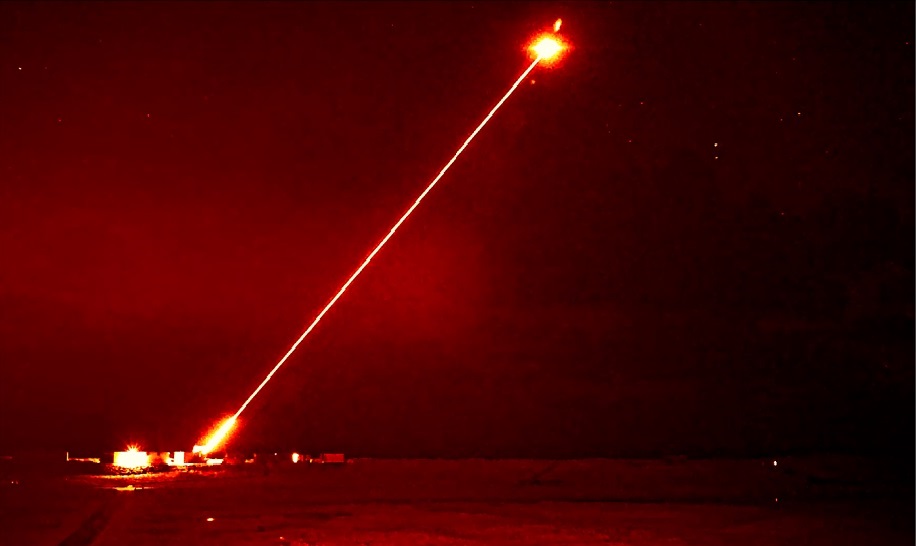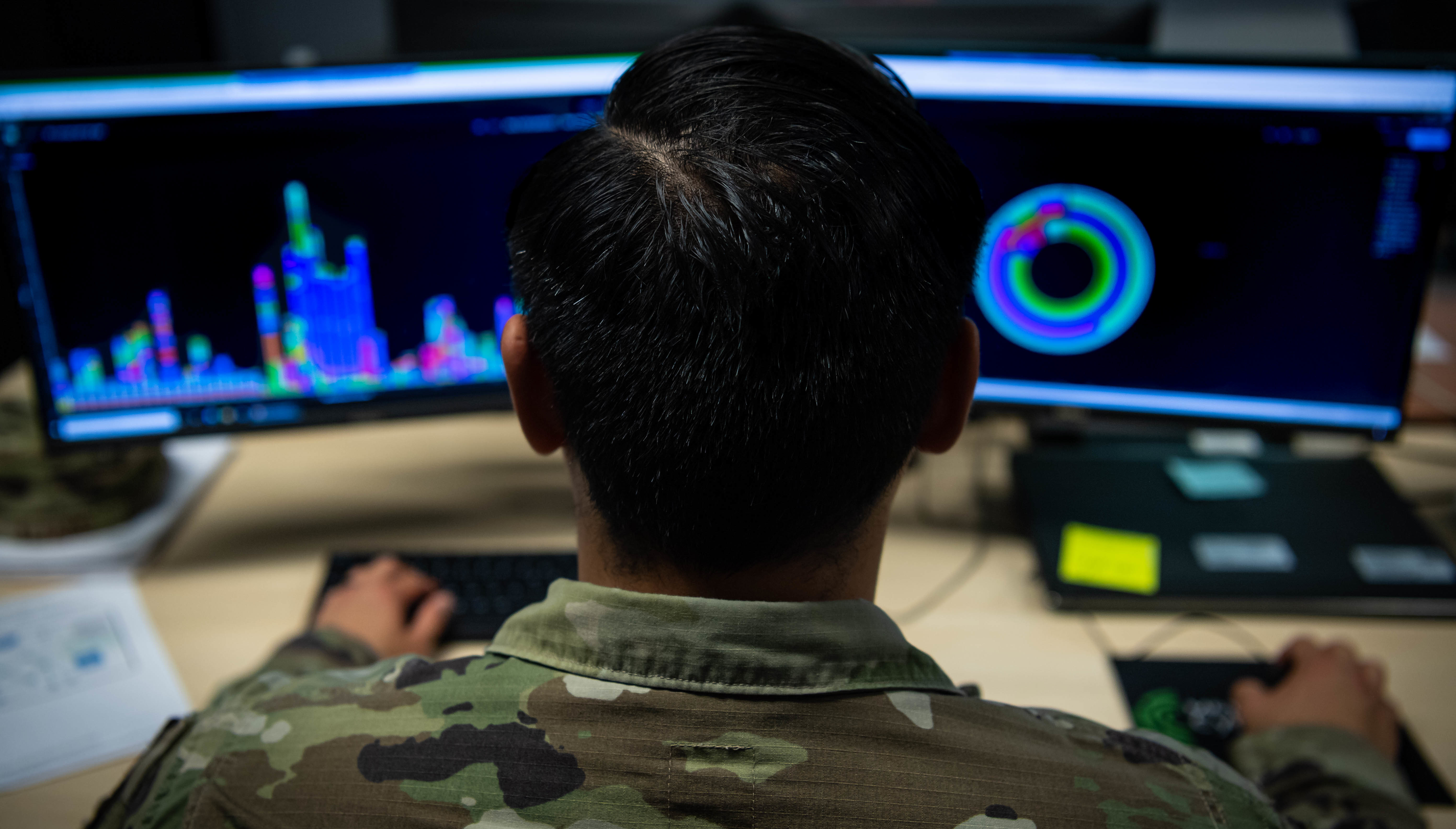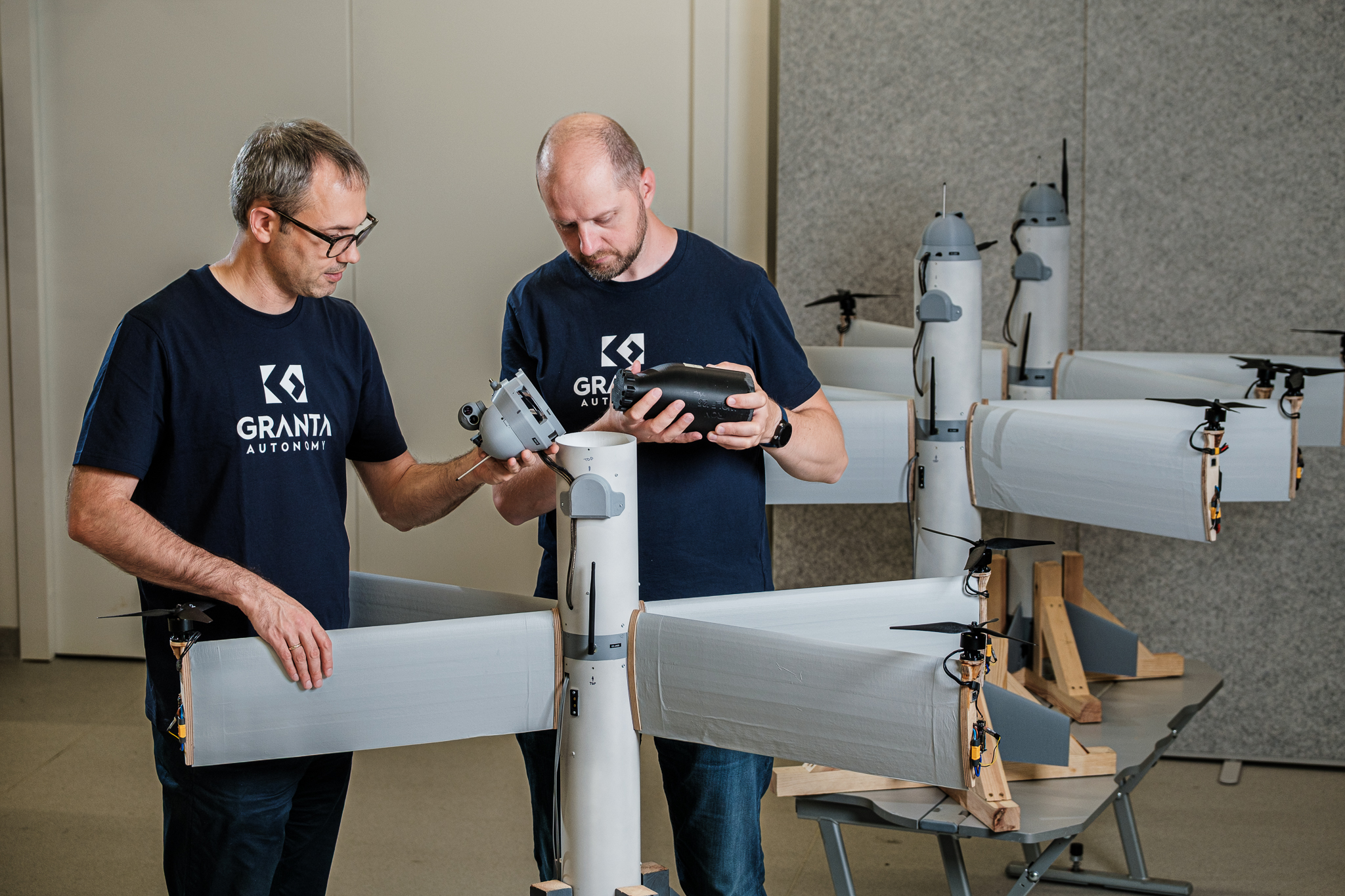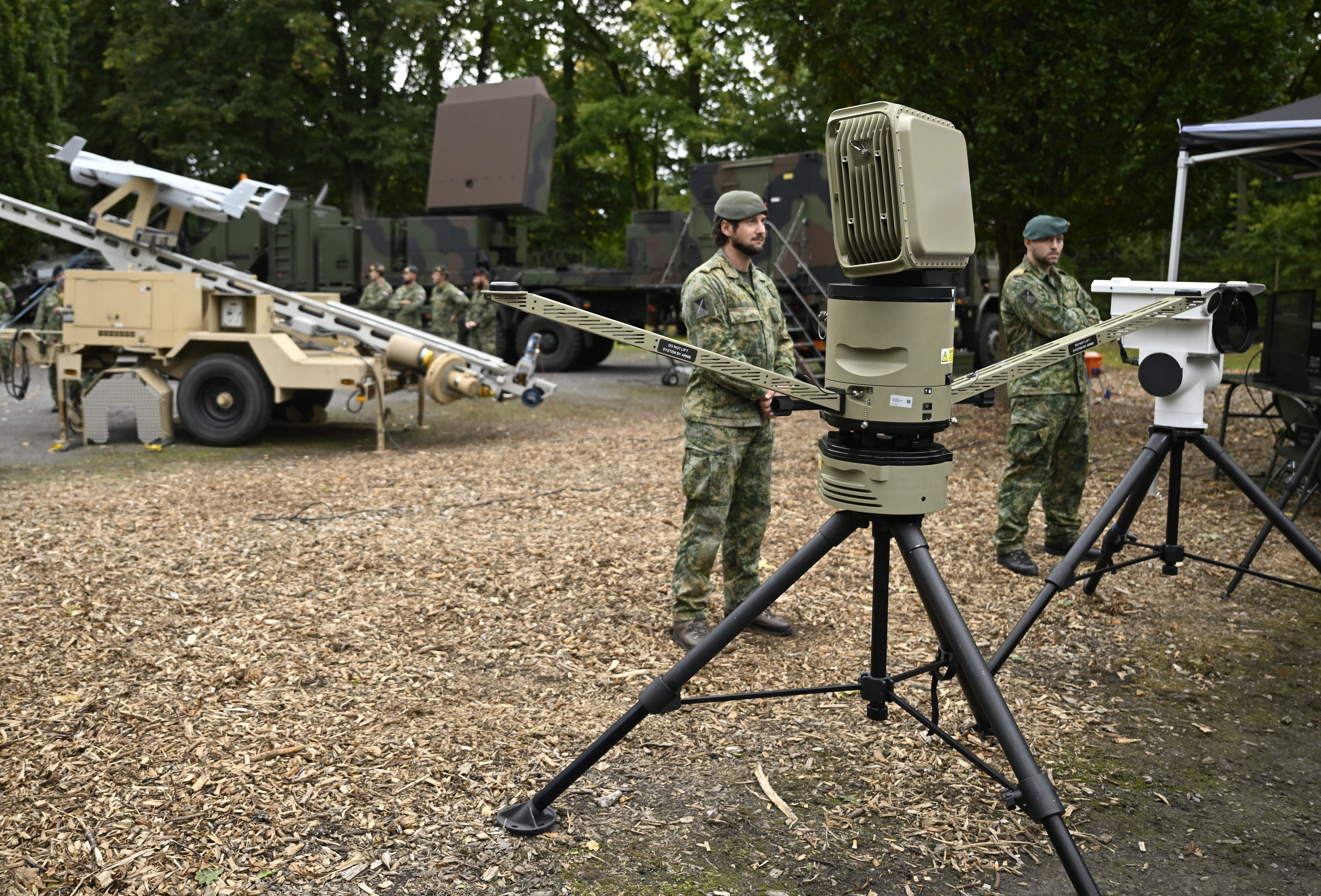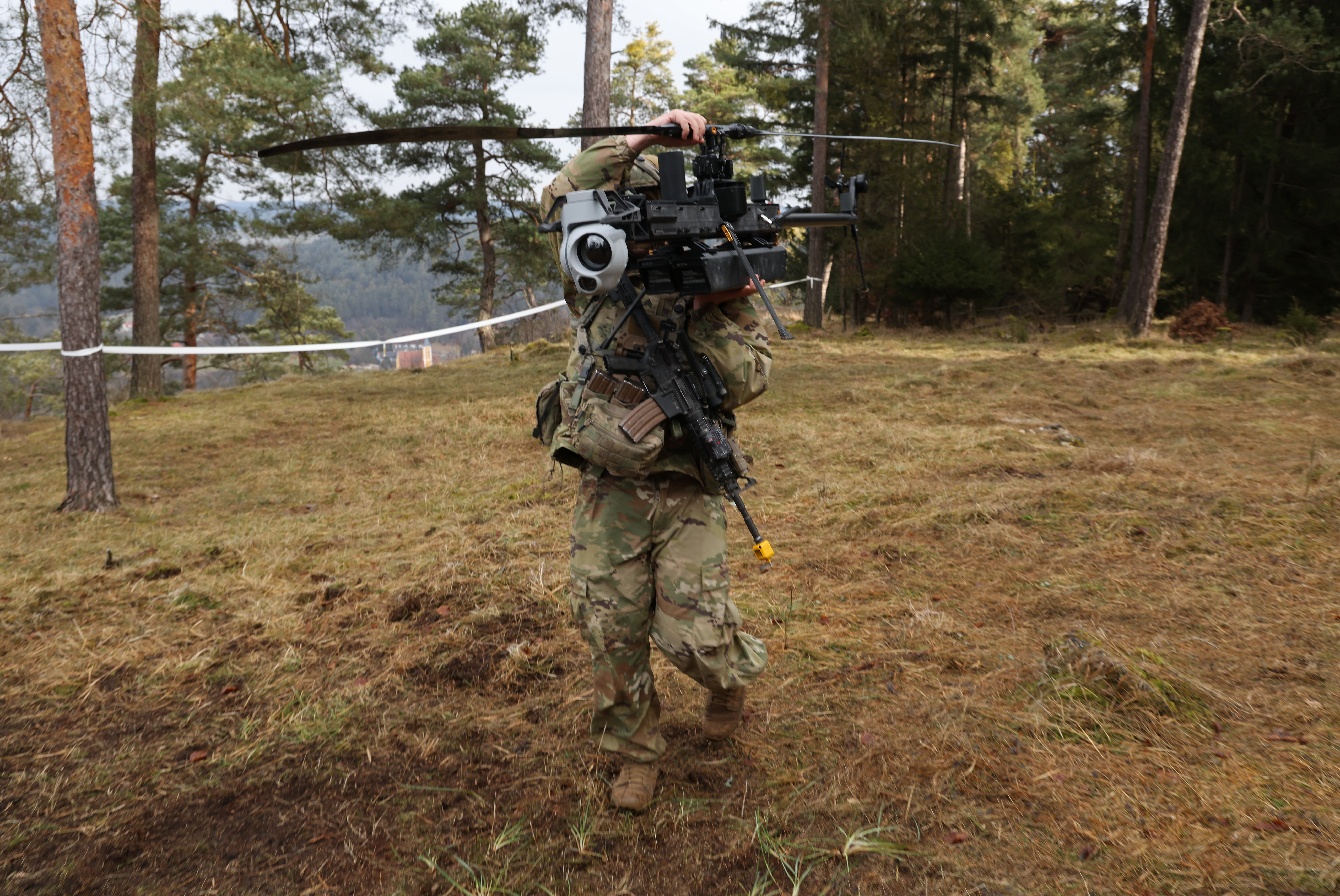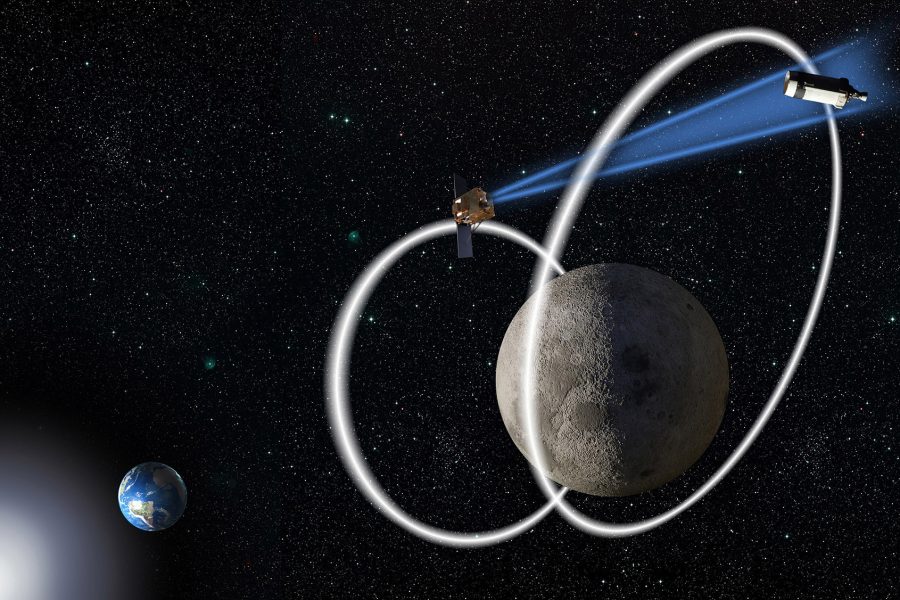
As the gap between U.S. and China’s space capabilities narrows, national security space experts say the Space Force and the broader Pentagon should forge stronger connections with the Intelligence Community and NASA in order to stay ahead.
Speaking Oct. 22 at a Washington Space Business Roundtable event, a panel of academics and former Pentagon officials said this is especially true when it comes to future operations on and around the Moon, given the economic and geopolitical stakes.
To foster better partnerships, Chris Williams, chair of the Moorman Center for Space Studies at the National Security Space Association and a former special assistant to the secretary of defense, recommended the Trump administration direct government space agencies to develop an “intersectoral strategy” aimed at promoting U.S. interests in space.
“Such a strategy should acknowledge that the Moon and Mars Lagrange points and supporting passageways have intrinsic national security, economic, and political value, and will serve as an infrastructure pathway to the Moon and Mars,” Williams said.
NASA, the IC, and the Pentagon all have programs geared toward better understanding the regions of space around and beyond the Moon. For NASA, much of that ambition is captured in its Artemis program, which aims to launch a crewed lunar landing mission by mid-2027, as well as several Moon-orbiting missions in the meantime.
The civil space agency has also pursued development of a space station called Gateway that would operate around the Moon, but the Trump administration moved to cancel the program in its fiscal 2026 budget request.
Meanwhile, DOD and the IC have largely focused their attention on developing space domain awareness and navigation capabilities to better understand cislunar space, which describes the area between the Earth and the Moon. The Space Force’s Oracle program, run by the Air Force Research Lab, plans to launch several space situational awareness satellites in the coming years. And the National Geospatial Intelligence Agency is working with the Space Force and NASA to create the mapping infrastructure for a GPS-like capability to support lunar navigation.
As the U.S. pursues these various lunar exploration and domain awareness missions, Dean Cheng, a senior fellow at the Potomac Institute for Policy Studies, said China has a roadmap of its own. The Chinese government has already landed several uncrewed spacecraft on the lunar surface and plans to launch a crewed Moon mission by 2030.
Cheng said China’s motives are less tied to an exploration agenda and are more focused on space governance.
“Space governance is about going to the moon not once, not twice, but constantly, to the point where China will establish the rules of space governance,” he said.
Echoing Cheng, Williams said he expects China, once it establishes a human presence on the Moon, to “lay claim to large swaths” of the lunar surface, daring the U.S. to challenge its assertions of sovereignty.
“They’re trying to set the terms of the debate, and I don’t know that we as a nation have internalized that yet,” Williams said. “We would love to have this be a head-to-head, our industry versus yours, but that’s not the way the Chinese see it. So, we need much closer collaboration—both between the civil space community, the Intelligence Community, and the defense community, and between the U.S. government and the private sector.”
On commercial partnerships, Williams said that while NASA is making strides to better leverage private sector systems through programs like the Commercial Lunar Payload Services Program, DOD and the IC are further behind in this area, despite recent policy shifts that encourage greater commercial adoption.
“I think the jury is still very much out in terms of the extent to which the national security community is willing and able to leverage commercial advancements,” he said, noting that one of the biggest barriers to greater collaboration is a lack of trust from military leaders that a commercial system can provide the same performance and reliability as a custom-built military capability.
“I think there’s going to be additional progress, but it’s going to take some time,” he said. “The real question is, do we have the time.”
The post Experts: US Needs Whole-of-Government Approach to Match China in Cislunar appeared first on Air & Space Forces Magazine.

Space, China, cislunar, intelligence community, NASA, space domain awareness
Air & Space Forces Magazine
[crypto-donation-box type=”tabular” show-coin=”all”]

